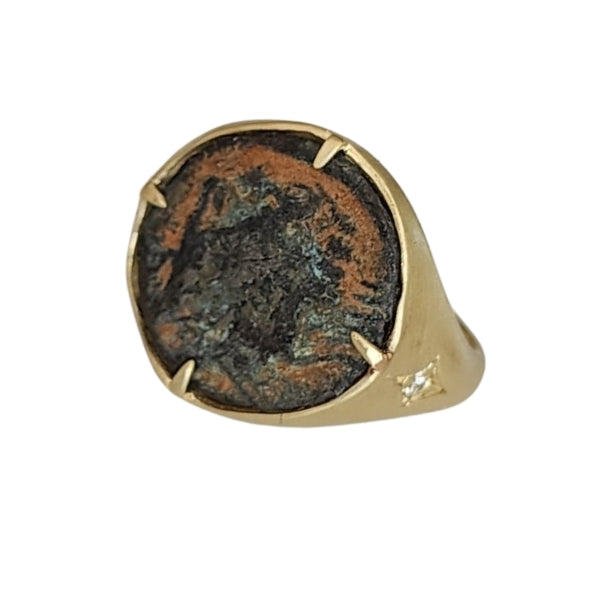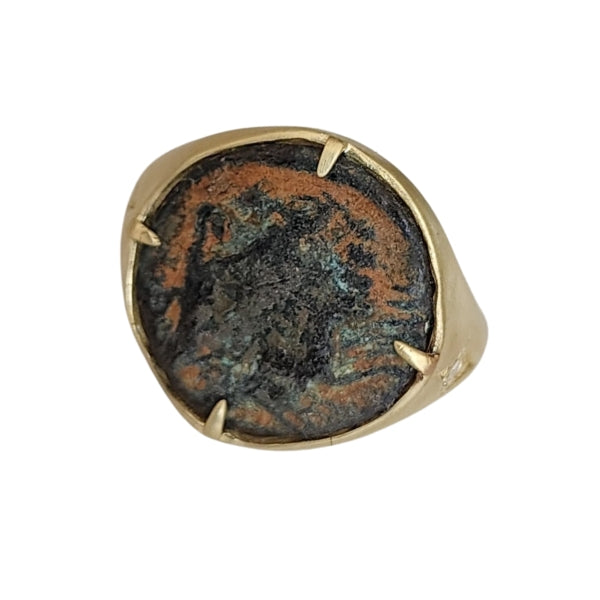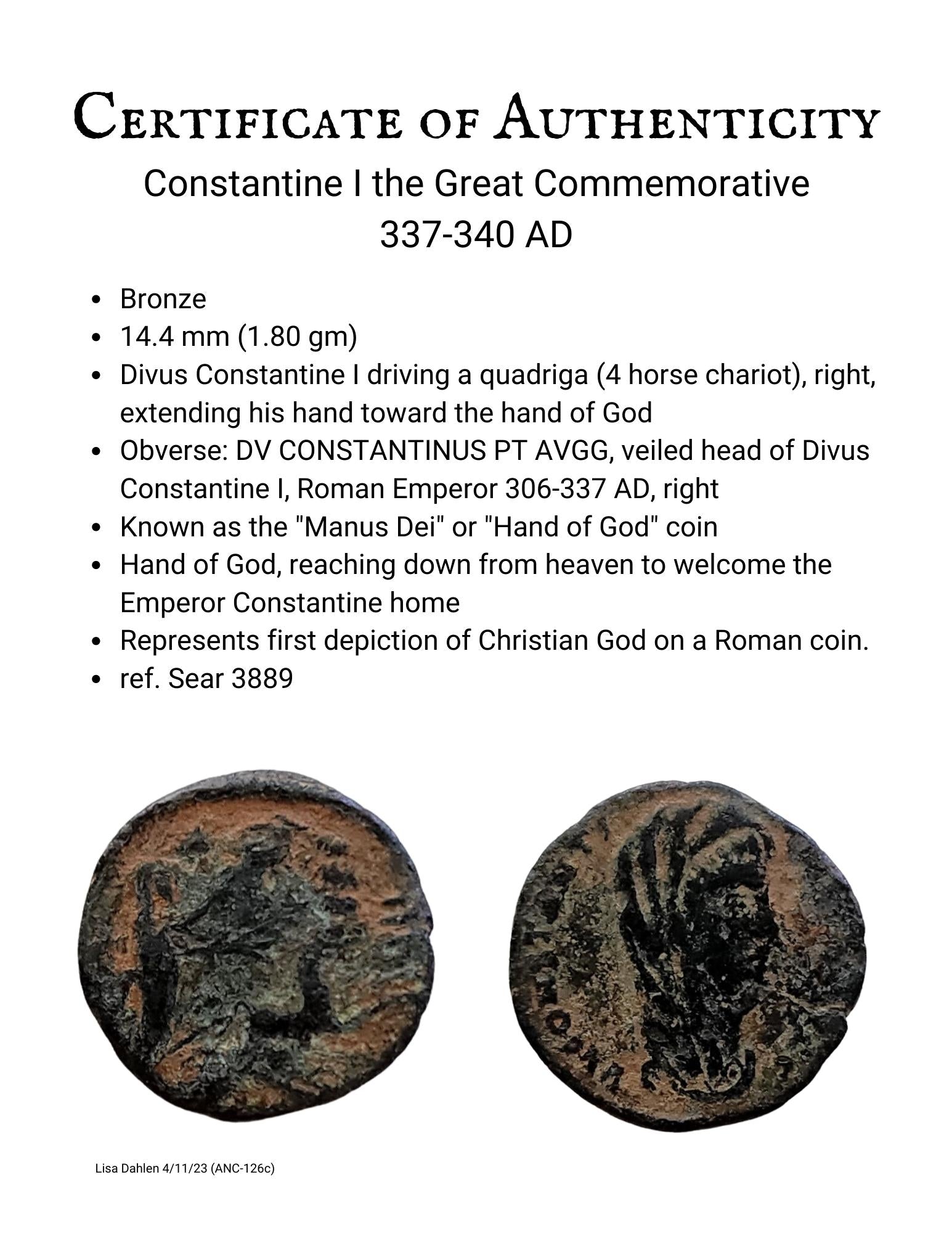Dated: 347-348 AD
"Hand of God" or "Manus Dei" commemorative coins were struck after Constantine I the Great's death (337 AD). They were the first depictions of a Christian deity on a coin. Constantine is driving a quadriga (four-horse chariot); as Constantine reaches up, the Hand of God reaches down to bring him into heaven. The obverse front of the coin is an image of the veiled Constantine.
In 312 AD, Constantine made a historical decision by ordering his army to wear a Christian symbol on their shields. He won the battle of the Milvian Bridge and attributed his success to his alliance with the Christian god.












